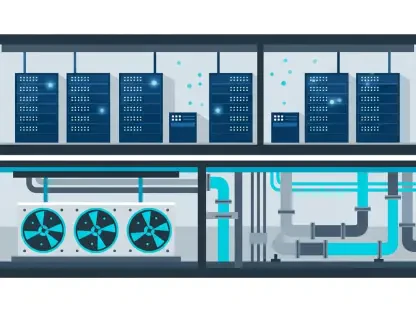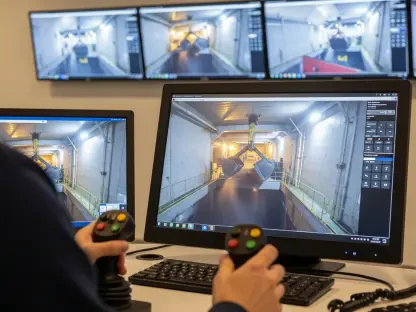In an era where enterprise technology evolves at a breakneck pace, MWC25 Las Vegas stands as a beacon for North American tech leaders seeking to navigate the intricate challenges of connectivity and digital transformation. Hosted at the prestigious Fontainebleau Las Vegas, this flagship event, organized by the GSMA in partnership with CTIA, brings together CIOs and senior IT decision-makers for two days of immersive keynotes, specialized summits, and vital networking opportunities. The conference is meticulously designed to address the pressing issues of AI integration, infrastructure complexity, and cybersecurity threats that define today’s business landscape. More than just a gathering, it serves as a critical platform where visionary ideas are transformed into actionable strategies, empowering attendees to make informed decisions that drive scalable impact. With a sharp focus on the unique needs of the North American enterprise ecosystem, this event promises to redefine how technology leaders approach connectivity challenges and opportunities.
Unveiling Transformative Industry Trends
The agenda at this pivotal conference is shaped by a deep dive into how advanced technologies are revolutionizing various sectors under the theme of Connected Industries. Attendees will explore the profound influence of 5G, IoT, and automation on industries like manufacturing, logistics, and government services through compelling case studies and expert-led discussions. High-profile speakers, including CTIA CEO Ajit Pai and GSMA CMO Lara Dewar, will share insights on how industrial-grade connectivity can turn ambitious operational goals into concrete results. These sessions aim to provide a clear understanding of the practical steps needed to integrate cutting-edge solutions, ensuring businesses remain competitive in a rapidly changing environment. The emphasis is on real-world applications, offering a roadmap for tech leaders to bridge the gap between innovation and execution.
Furthering this exploration, panels featuring executives from prominent organizations such as Palantir and ServiceNow will dissect the critical process of modernizing legacy infrastructure. These discussions will focus on overcoming the hurdles of outdated systems, presenting strategies for seamless transitions to more agile, connected operations. Unlike broader theoretical talks, this segment hones in on tangible challenges faced by enterprises today, from scalability issues to integration complexities. The insights shared will equip CIOs with the knowledge to tackle immediate pain points while aligning with long-term transformation goals. By spotlighting specific examples of successful overhauls, the conference ensures that attendees walk away with actionable ideas tailored to their organizational needs, reinforcing the event’s commitment to practical impact.
Navigating the AI Revolution
Another cornerstone of the conference agenda is the exploration of AI’s transformative potential through the AI+ theme, which moves beyond surface-level buzzwords to address ethical integration and measurable outcomes. Sessions led by experts from Box, Deloitte, and Qualcomm will guide tech leaders through the journey of evolving experimental AI projects into sustainable, enterprise-wide solutions. This focus on real impact highlights how generative and agentic AI models can enhance IT architecture, boost workforce productivity, and refine service delivery. The discussions aim to demystify complex AI concepts, providing clarity on how to balance innovation with accountability in a way that aligns with business objectives and regulatory demands.
Complementing these insights, the AI+ theme will also tackle the strategic challenges of scaling AI across diverse operational landscapes, ensuring it becomes a reliable asset rather than a fleeting trend. Unlike generic overviews, these sessions will offer detailed frameworks for CIOs to assess readiness, allocate resources, and mitigate risks associated with AI deployment. By emphasizing sustainable practices, the conference addresses the critical need for long-term planning in tech adoption. Attendees will gain access to proven methodologies and case studies that illustrate how to achieve meaningful results, fostering a deeper understanding of AI’s role in shaping future-ready enterprises. This segment underscores the importance of thoughtful integration as a driver of lasting success.
Laying the Groundwork for Innovation
The conference also prioritizes the foundational technologies that underpin scalable innovation through the Connected Enablers theme, focusing on edge computing, network APIs, cloud-native systems, and robust security protocols. Keynotes from senior leaders at IBM and Automation Anywhere will illuminate how strategic investments in these areas can build resilient, adaptable operations capable of withstanding technological disruptions. This theme is tailored for CIOs tasked with making high-stakes decisions, offering guidance on prioritizing capital expenditures to ensure infrastructure keeps pace with evolving demands. The emphasis here is on creating systems that not only function effectively today but are also equipped for tomorrow’s challenges.
Expanding on this foundation, the Connected Enablers discussions will delve into the role of intelligent automation in enhancing operational agility, providing a clear path for enterprises to optimize processes and reduce inefficiencies. Unlike other themes that focus on specific technologies, this segment takes a holistic view of how interconnected systems work together to support broader digital transformation goals. Attendees will learn how to leverage these enablers to fortify cybersecurity measures and improve scalability, ensuring their organizations remain competitive in a dynamic market. By offering a blend of visionary insights and practical advice, this part of the conference equips tech leaders with the tools to future-proof their operations through informed, strategic planning.
Diving Deep with Specialized Summits
Beyond overarching themes, the event offers a series of specialized summits designed to address niche areas of enterprise connectivity, ensuring every attendee finds content relevant to their specific challenges. From the CIO Summit, which fosters peer-to-peer learning, to the Smart Aviation Summit, focusing on high-stakes connectivity solutions, these sessions provide targeted, in-depth insights. Other summits, like the Private Wireless Networks Summit, explore 5G applications in sectors such as healthcare, while the Agentic AI Summit and Satellite & NTN Summit tackle autonomous AI and mobile-satellite convergence. This diversity ensures a comprehensive approach to learning and problem-solving.
Adding to this tailored experience, these summits facilitate focused dialogue among industry peers, allowing for the exchange of ideas on both broad trends and specialized applications. Unlike general keynotes, these smaller-scale sessions create space for detailed exploration of complex issues, from regulatory hurdles in aviation to privacy concerns in healthcare connectivity. Attendees can expect to leave with actionable takeaways that directly apply to their field, whether they’re addressing operational bottlenecks or pioneering new tech integrations. This commitment to covering a wide spectrum of interests highlights the event’s role as a pivotal resource for tech leaders seeking both inspiration and practical solutions.
Reflecting on a Connectivity Milestone
Looking back, MWC25 Las Vegas emerged as a defining moment for enterprise technology leaders in North America, offering a robust platform to address the intricate demands of digital transformation. The event’s thoughtfully curated agenda, spanning Connected Industries, AI+, and Connected Enablers, provided a comprehensive lens on how technologies like 5G and AI reshaped industries while grounding discussions in practical execution. Specialized summits further enriched the experience, catering to diverse sectors with precision and depth. As tech leaders departed, they carried forward a wealth of strategies to implement scalable change. Moving ahead, the focus should shift to applying these insights, fostering collaborations initiated at the conference, and continuously adapting to emerging trends to maintain a competitive edge in the ever-evolving connectivity landscape.









